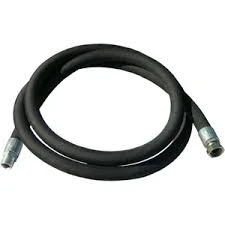AC Piping Solutions for Cassette Air Conditioning Systems
Understanding Cassette Air Conditioning Piping A Comprehensive Overview
In recent years, the rise of cassette air conditioning systems has transformed the way we perceive climate control in residential and commercial settings. These systems are particularly notable for their compact design and efficient air distribution. At the heart of their operation lies the importance of proper piping, which is crucial for ensuring optimal performance and energy efficiency. This article delves into the intricacies of cassette AC piping, exploring its design, installation, maintenance, and the benefits it offers.
What is Cassette Air Conditioning?
Cassette air conditioning units are ceiling-mounted systems that blend seamlessly into the architectural design of a room. Unlike traditional wall-mounted units, a cassette AC is more discreet, with only the grill visible, allowing for unobtrusive integration. This design is particularly appealing in commercial spaces, offices, and modern homes, where aesthetic considerations are paramount.
The Role of Piping in Cassette AC Systems
The piping in cassette air conditioning systems serves as the lifeline that transports refrigerant between the indoor unit (the cassette) and the outdoor compressor unit. Properly sized and installed piping ensures that the system operates efficiently, maintaining the desired temperature while minimizing energy consumption. The piping setup typically involves two main lines a high-pressure line that carries refrigerant gas from the compressor to the indoor unit and a low-pressure line that returns the refrigerant in a liquid state back to the outdoor unit.
Design and Sizing
When designing the piping for a cassette AC system, several factors must be considered. These include the distance between the indoor and outdoor units, the elevation difference, and the specific requirements of the chosen air conditioning unit. The diameters of the pipes are crucial; undersized pipes can lead to reduced efficiency and increased wear on components, while oversized pipes can lead to improper refrigerant flow and inadequate cooling or heating.
Installation Best Practices
Installing piping for cassette air conditioning units requires precision and care
. Here are some best practices1. Proper Layout Designing a piping layout that minimizes bends and turns can help maintain refrigerant pressure and efficiency. Straight runs are ideal, but if turns are necessary, gentle bends should be used.
2. Insulation Insulating refrigerant lines is critical to prevent energy loss and condensation. Proper insulation also protects against external temperature fluctuations, which can impact system performance.
3. Support and Mounting Adequate support should be provided for the piping to prevent sagging and potential damage. Properly mounting the pipes also avoids excessive vibration, which can lead to wear and tear over time.
4. Leak Testing After installation, performing a thorough leak test is crucial. Any refrigerant leaks can compromise system efficiency and lead to environmental concerns, especially with certain refrigerants that have high global warming potential.
cassette ac piping

Maintenance Considerations
Regular maintenance of the piping system is essential to ensure longevity and efficiency. Here are some maintenance tips
- Routine Inspections Periodically inspect pipes for signs of wear, rust, or leaks. Addressing any issues promptly can prevent larger problems down the line.
- Cleaning Keeping both the interior and exterior surfaces of the pipes clean helps maintain optimal heat exchange efficiency.
- Check Insulation Inspect the insulation for any tears or damage, as compromised insulation can lead to energy losses.
Benefits of Proper Piping in Cassette AC Systems
The benefits of investing in quality piping for cassette air conditioning systems are manifold
- Enhanced Efficiency Properly designed and installed piping ensures that refrigerant flows smoothly, maximizing the system’s cooling or heating output.
- Energy Savings Efficient systems consume less energy, leading to lower utility bills and a reduced carbon footprint.
- Extended Lifespan Minimal strain on the components due to properly sized and installed piping can lead to fewer breakdowns and longer equipment life.
- Improved Comfort Effective air distribution through optimal piping configurations results in better temperature regulation, promoting enhanced comfort for occupants.
Conclusion
Cassette air conditioning systems, paired with well-designed and installed piping, represent a highly efficient solution for modern climate control needs. Attention to detail in the design, installation, and maintenance of the piping is essential for these systems to perform at their best. As more individuals and businesses seek efficient and aesthetically pleasing cooling solutions, understanding the critical role of piping in cassette AC systems will become increasingly important. Investing in quality installation and maintenance not only ensures system efficiency but also contributes to a comfortable and environmentally friendly space.
-
Ultimate Spiral Protection for Hoses & CablesNewsJun.26,2025
-
The Ultimate Quick-Connect Solutions for Every NeedNewsJun.26,2025
-
SAE J1401 Brake Hose: Reliable Choice for Safe BrakingNewsJun.26,2025
-
Reliable J2064 A/C Hoses for Real-World Cooling NeedsNewsJun.26,2025
-
Heavy-Duty Sewer Jetting Hoses Built to LastNewsJun.26,2025
-
Fix Power Steering Tube Leaks Fast – Durable & Affordable SolutionNewsJun.26,2025

